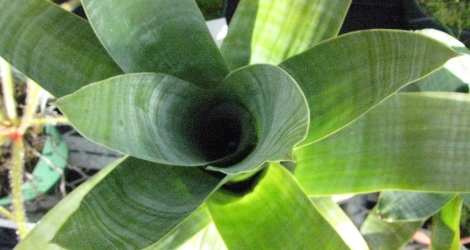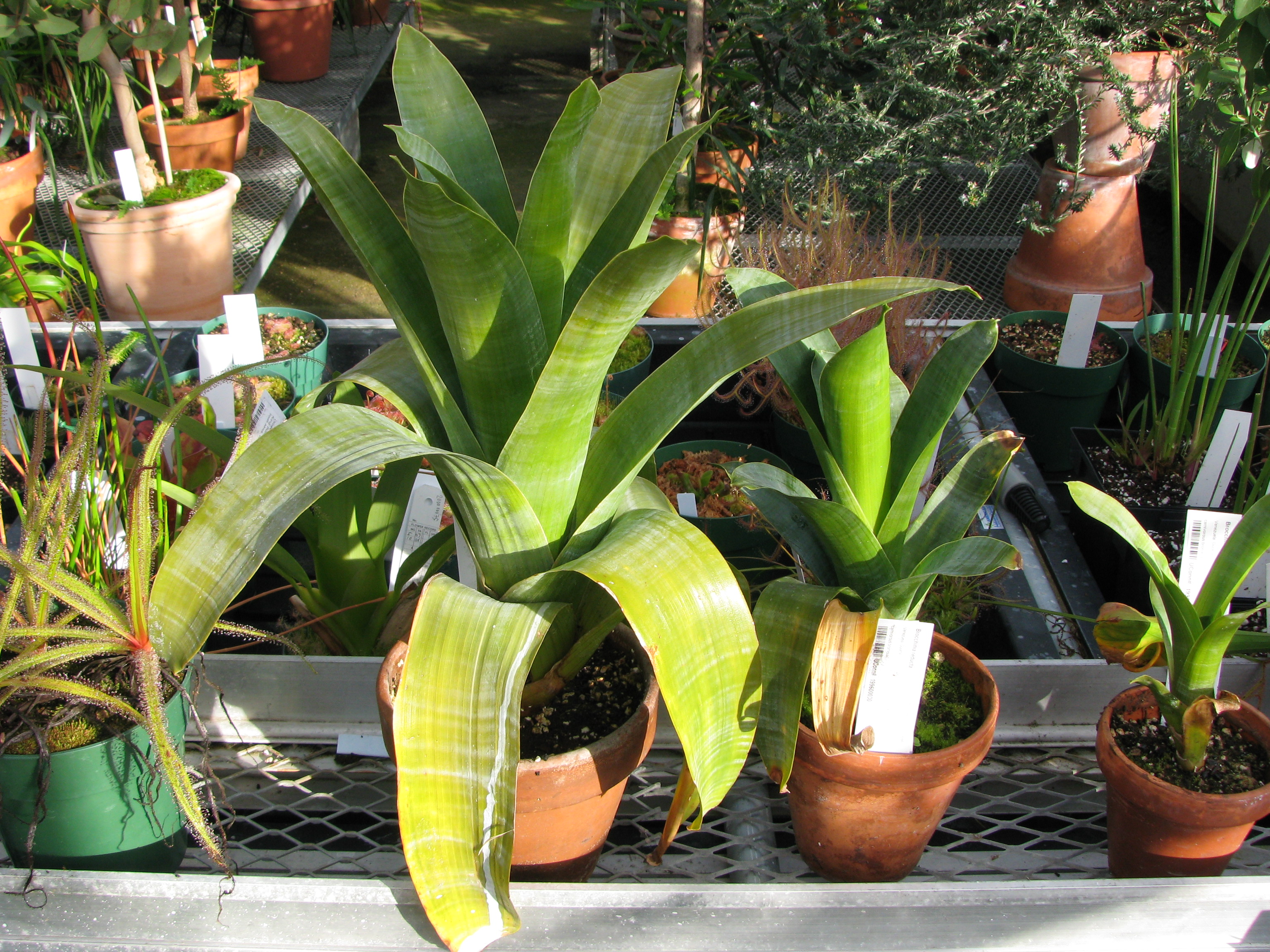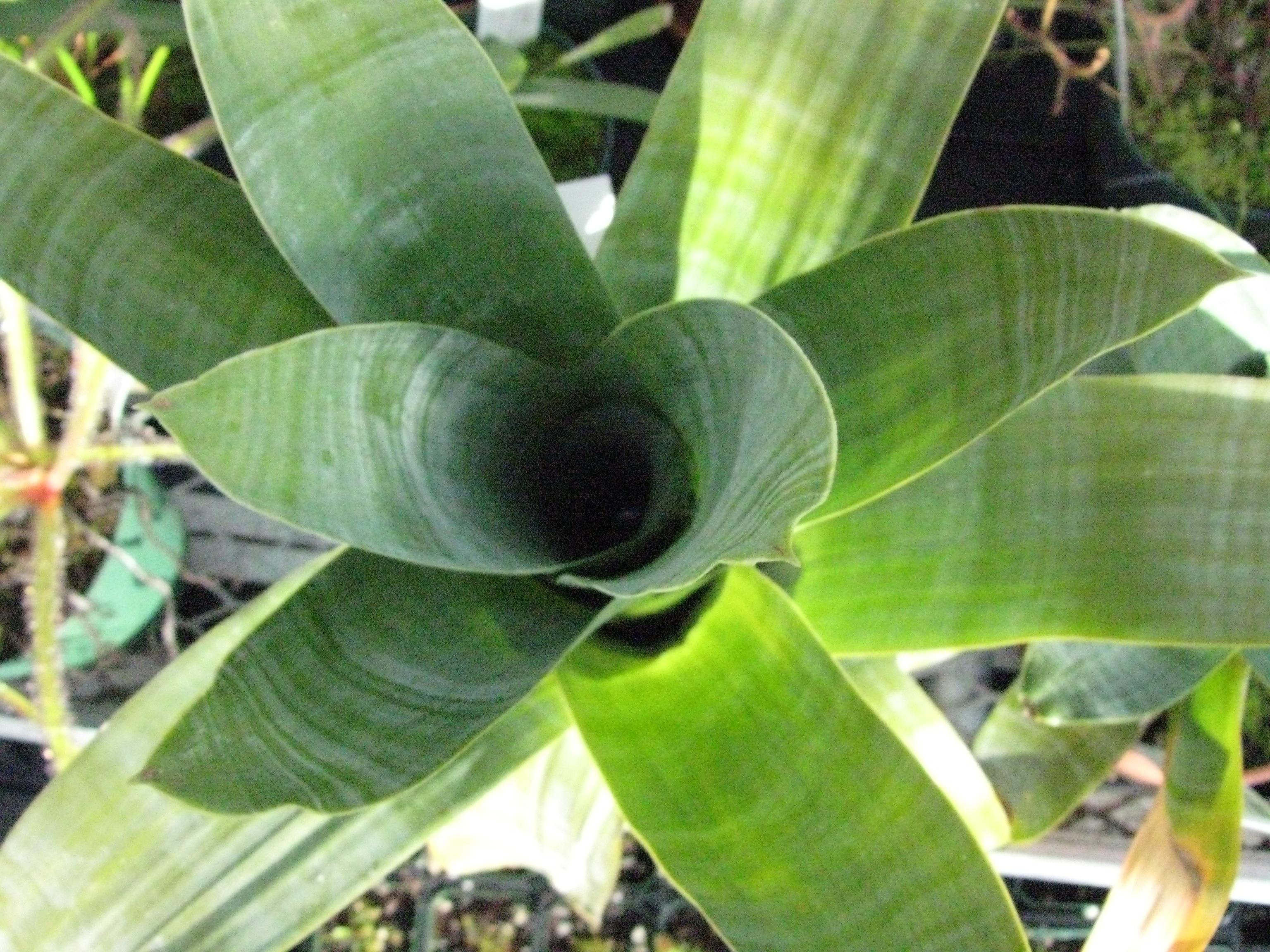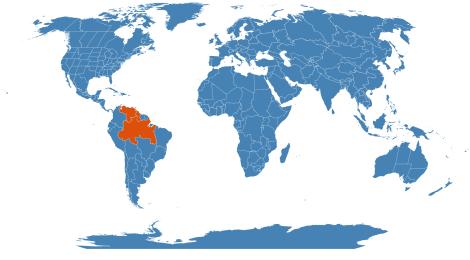Accession Data
Brocchinia reducta
Common Name: Brocchinia
Family: Bromeliaceae
Country of Origin: Venezuela (Bolívar) to Guyana & Brazil (Roraima)
Description: It is terrestrial rather than epiphytic, grows in nutrient-poor soils in southern Venezuela and Guyana, is seldom shaded by other vegetation, and its tanks often contain dead insects, such as ants. A sweet odor emanating from the tank may be the means of attracting insects. Its leaves, too, produce a waxy powder which, as in Catopsis berteroniana, seems to prevent escape of trapped insects. The highly acid water in its tank may help the action of proteases in digesting insect bodies. Neither this plant nor C. berteroniana has been shown to produce proteases (unlike more familiar carnivorous plants such as Nepenthes and Sarracenia pitcher plants), but it could be argued that production of proteases by these plants would be an unnecessary expenditure of energy when bacterial and fungal decomposition of materials already functions in the tanks, and a means of absorption (trichomes) is present.
Accession Data
Accession #: 199600030
Accession Date: 1996-12-06 00:00:00
Bloom Status: 🪴 Not Flowering
Location: 1319
Quantity: 3
Source: California Carnivores
Classification
Division: Magnoliophyta
Class: Liliopsida
Subclass: commelinids
Order: Poales
Family: Bromeliaceae
SubFamily: Brochinioideae
Flowering Data:
This accession has been observed in bloom on:| Year | Jan | Feb | Mar | Apr | May | Jun | Jul | Aug | Sep | Oct | Nov | Dec | ||||||||||||||||||||||||||||||||||||||||
|---|---|---|---|---|---|---|---|---|---|---|---|---|---|---|---|---|---|---|---|---|---|---|---|---|---|---|---|---|---|---|---|---|---|---|---|---|---|---|---|---|---|---|---|---|---|---|---|---|---|---|---|---|
| 2025 | ||||||||||||||||||||||||||||||||||||||||||||||||||||
| 2024 | ||||||||||||||||||||||||||||||||||||||||||||||||||||
| 2023 | ||||||||||||||||||||||||||||||||||||||||||||||||||||
| 2022 | ||||||||||||||||||||||||||||||||||||||||||||||||||||
| 2021 | ||||||||||||||||||||||||||||||||||||||||||||||||||||
| 2020 | ||||||||||||||||||||||||||||||||||||||||||||||||||||
| 2019 | ||||||||||||||||||||||||||||||||||||||||||||||||||||
| 2018 | ||||||||||||||||||||||||||||||||||||||||||||||||||||
| 2017 | ||||||||||||||||||||||||||||||||||||||||||||||||||||
| 2016 | ||||||||||||||||||||||||||||||||||||||||||||||||||||
| 2015 | ||||||||||||||||||||||||||||||||||||||||||||||||||||
| 2014 | ||||||||||||||||||||||||||||||||||||||||||||||||||||
| 2013 | ||||||||||||||||||||||||||||||||||||||||||||||||||||
| 2012 | ||||||||||||||||||||||||||||||||||||||||||||||||||||
| 2011 | ||||||||||||||||||||||||||||||||||||||||||||||||||||
| 2010 | ||||||||||||||||||||||||||||||||||||||||||||||||||||
| 2009 | ||||||||||||||||||||||||||||||||||||||||||||||||||||
| 2008 | ||||||||||||||||||||||||||||||||||||||||||||||||||||
| 2007 | ||||||||||||||||||||||||||||||||||||||||||||||||||||
| 2006 | ||||||||||||||||||||||||||||||||||||||||||||||||||||
References
- Frank, J.H. Carnivorous Bromeliads, 1996. Last accessed on Wednesday, September 27, 2017.
- The Plant List (2013). Version 1.1. Last accessed on Wednesday, September 27, 2017.
- WCSP (2017). World Checklist of Selected Plant Families. Facilitated by the Royal Botanic Gardens, Kew. Last accessed on Wednesday, September 27, 2017.
Images



